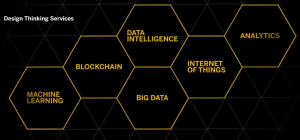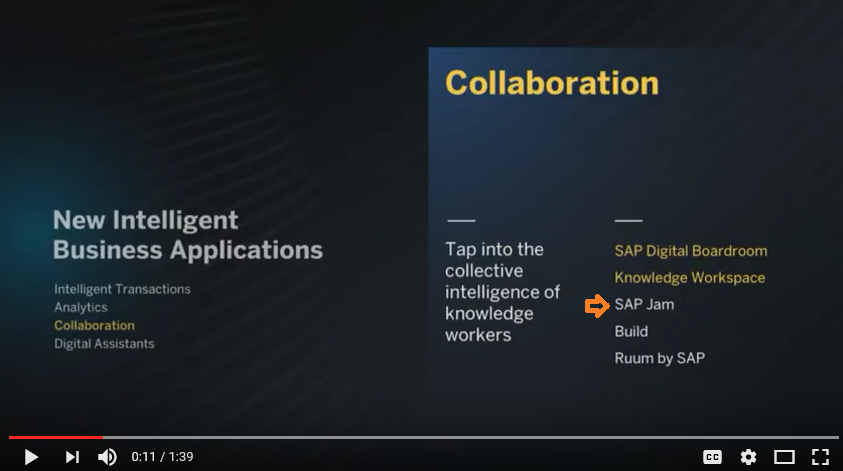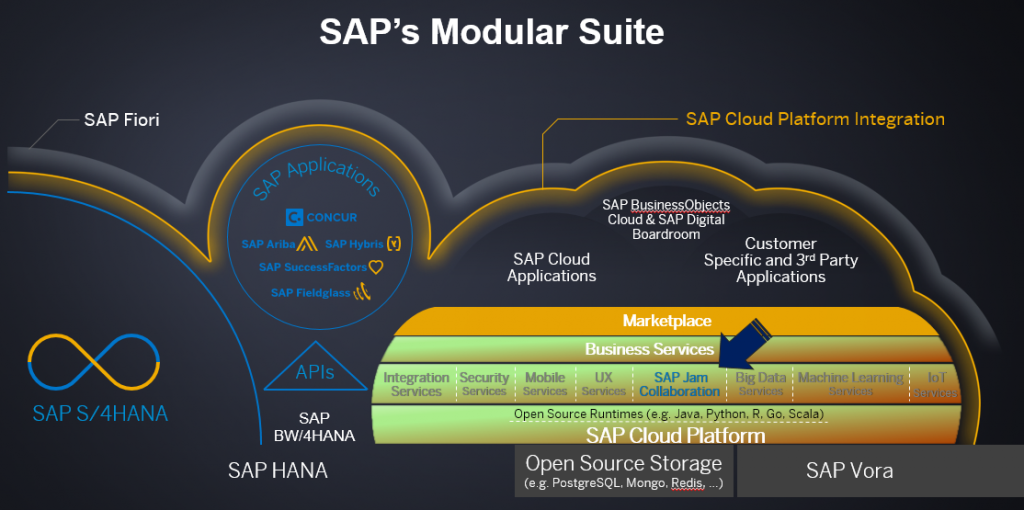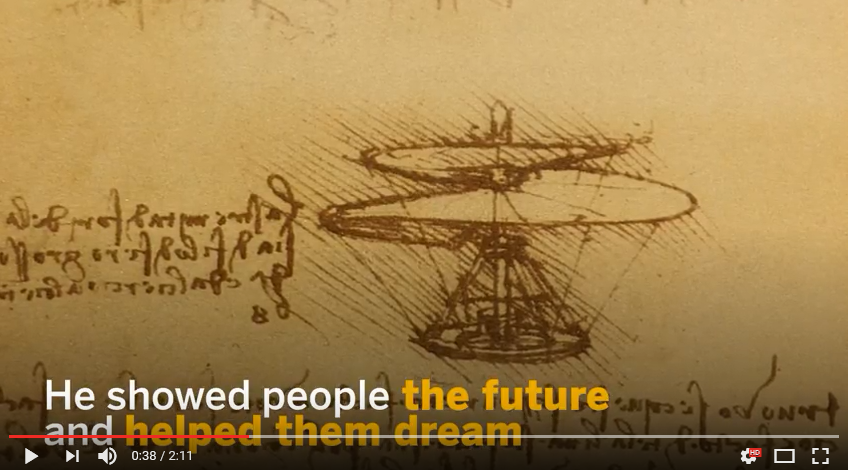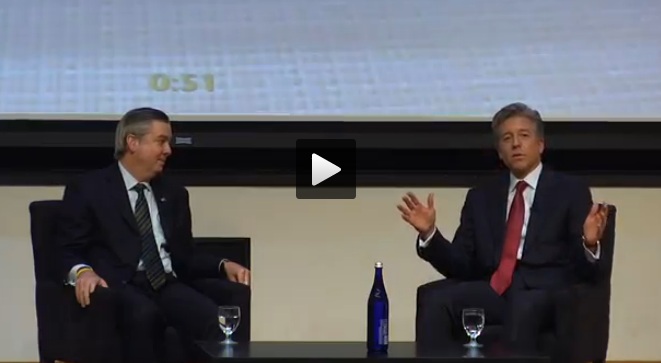Check out the SAP Spotlight Interviews which combine a combination of videos and Q&A format. These blogs help showcase SAP Community experts and advocates. View >>
SAP Mentor Spotlight Interview: SAP Learning
Originally published on the SAP Community
| The SAP Mentor Spotlight Series highlights key strategic topics, such as learning, and provides insights from Mentors and SAP leaders on turning ideas into innovative approaches that impact people, process, and technology. |
Empowering Transformative Outcomes Through Continuous Learning
Staying on the cutting-edge during times of change is more important than ever. One of the keys to success is the lifelong pursuit of knowledge and learning.
As business, technology, and user experiences change, there are a wide range of ways to continually refresh existing skills, acquire new ones, and evolve new ways to think about business and IT challenges.
To reflect on how to take advantage of SAP and SAP Community learning resources, Max Wessel, EVP & Chief Learning Officer at SAP, caught up with Tammy Powlas, Senior Business Analyst at Fairfax Water and SAP Mentor, to discuss what role learning has played in her life, and how she has furthered her knowledge through the SAP Community.
During their session they discussed:
- Enabling learning, whether experiential on the job, or formal learning to help one progress in their career.
- Adapting to many changes given the realities of the last year to address digital transformation and embrace the importance of continuous learning.
- Pressing one’s skills; pushing forward to take expertise to the next level.
- Turning to the SAP community to get inspired and engage in peer-to-peer learning.
- Assessing RISE with SAP and how members of the SAP Community can keep their digital transformation initiatives moving forward.
As Max shared during the session, “When driving transformation, the more value we bring to the table, the more guidance we can deliver that helps people step forward, the better it is for all of us.”
SAP and the SAP Community provide many learning resources to support building knowledge, driving innovation, and staying agile.
How do you learn? Let us know in the comments below!
Related Links
- [Blog Post] RISE with SAP S/4HANA Utilities Webcast Recap by Tammy Powlas
- OpenSAP
- SAP Learning Hub
From Now to the Year 2030 – SAP Jam Collaboration Will Play an Important Role With SAP Leonardo and the Digital Revolution
What is the role of collaboration in the digital age?
The recent SAP Executive Summit 2017 in Italy, the home of Leonardo di ser Piero da Vinci, shared insights on the “4th industrial revolution” to remind us that we can learn from each new wave of progress and change.
Bill McDermott, SAP, CEO, referenced in his keynote at Sapphire NOW the “fourth industrial revolution and an incredible opportunity for companies to re-imagine themselves in this digital age.”
And now with the overwhelming success of Leonardo Live in Frankfurt Germany there is an opportunity to further understand digital innovation and leading-edge solutions with customers, partners, and experts from around the globe.
As we consider the historic and future trends related to the cloud and digital transformation, one of the leading common denominator grows in importance: collaboration.
The Industrial Revolution – A Look Back & Forward
Upon hearing and reviewing these presentations, keynotes, and events, I decided to research the previous industrial revolutions and consider the role of collaboration in respect to connecting people, processes, and technology.
- The first industrial revolution saw the growth of steam power, coal, iron, railroads and textiles
- The second one involved mass production advancements in industry, technology, energy, electricity, petroleum, steel, agriculture, manufacturing and transportation
- The third realized information technology, new energy, and renewable electricity
- Now the fourth is the digital revolution
Collaboration played an important part in each of these industrial revolutions. And now we look forward to the digital age before us and the next big wave of opportunity: SAP Leonardo.
For SAP Leonardo solutions to work at their optimum level there will be many business and IT considerations including a key universal theme = collaboration. Whether addressing all or one of the following: Internet of Things (IOT), Machine Learning, Blockchain, Analytics, Big Data, SAP Cloud Platform, Digital Supply Chain, Leonardo Bridge, and Design Thinking — they all work best when people team together.
Collaboration – A View from the Top
Perhaps Hasso Plattner, SAP co-founder and Chairman of the Supervisory Board said it best, “Simplicity, Speed, Collaboration, Security Drive – The Intelligent Future.” During Sapphire NOW he shared a key message about “tapping into the collective intelligence of workers” (Proof point: watch the first 20 seconds of this video, see the orange arrow below where he identified SAP Jam).
SAP Jam Collaboration Plays a Central Role
SAP will continue to invest in SAP Jam as a central component of the digital modular suit. As the value map and roadmap continue to evolve, SAP Jam will play a unique role to enable SAP Leonardo and Digital Transformation. SAP’s Modular Suite highlights the importance of collaboration, SAP Jam Collaboration.
Collaboration has a Purpose & Unique Place in the Digital Age
It all makes perfect sense. Digital Transformation for business and IT requires collaboration to harness the intellect of the entire workforce. Where there is collaboration, individual and group intelligence can be realized to accelerate revenues, growth, value, learning, productivity, and success.
Jobs and successful outcomes, between now, 2030 and beyond, depend on collaboration to address and stay ahead of the rapidly changing marketplace.
Where there is innovation…
When a team redefines a business challenge or opportunity. As SAP and third-party apps and data are used to turn ideas into action. Where rollouts go from pilot programs to scale across the enterprise.
From disparate silos to holistic central hubs of knowledge.
To turn a vision into reality. For the early adopters, business colleagues and lines of business, both internal and external to the organization, who are empowered to transform the business.
For community building.
To gain the competitive advantage.
To accelerate initiatives and create win-wins.
The best bet, both now and as we go to 2030 and beyond, is SAP, SAP Leonardo and for collaboration: SAP Jam.
—
Useful Links / References
- Hasso Plattner: Simplicity, Speed, Collaboration, Security Drive “The Intelligent Future”
- Join the SAP Leonardo iFG Community
- SAP Leonardo and The Digital Renaissance
- Video: Running a Live Business with the SAP Digital Boardroom: Hasso Plattner at SAPPHIRE NOW 2017
- SAP CEO Bill McDermott: “Empathy to Action Is a Race Without a Finish Line”
- What’s New in SAP Cloud Platform Integration – Update from the Labs Q1/2017
About the Author
 Richard D. Blumberg is a SAP Jam Practice leader who works with both SAP and SAP Services. He is the President of World Sales Solutions, LLC (WSS) (www.WorldSalesSolutions.com) providing 29+ years of thought leadership on a variety of “View from the Top” strategies including: Enterprise Social Business, Go-to-Market Strategies, Business Development, Talent Development, and Community Building. He and his team are recognized SAP Jam global experts for implementations, innovation, and adoption.
Richard D. Blumberg is a SAP Jam Practice leader who works with both SAP and SAP Services. He is the President of World Sales Solutions, LLC (WSS) (www.WorldSalesSolutions.com) providing 29+ years of thought leadership on a variety of “View from the Top” strategies including: Enterprise Social Business, Go-to-Market Strategies, Business Development, Talent Development, and Community Building. He and his team are recognized SAP Jam global experts for implementations, innovation, and adoption.
—
Blogs
- Originally Published on the SAP Community >>
- 14 Ways to JumpStart #SAPJam Collaboration, Communities or Groups
- Understanding the Lift in SAP Jam Implementations & Adoption
- SAP Jam: Using all the Piano’s Keys and Pedals
- The Path to SAP Jam ROI Success
- SAP Jam: The ROI Impacting Sales Productivity
- Split Second Selling with SAP Jam – 7 Use Cases!
- The Customer Go-to-Market Imperative – Transforming Silos to Social Business and Community Building
- View from the Top: Bill McDermott shares his success secrets at a #fireside chat!
14 Ways to JumpStart #SAPJam Collaboration, Communities or Groups
How a Group Admin or Leader Ensures Adoption!
Important strategic initiatives, business outcomes and processes, collaboration, content, communications, and/or community building takes “time and effort” to translate onto SAP Jam.
The recent study, “Forrester Total Economic Impact™ of SAP Jam Collaboration for Learning, Onboarding and Employee Development” showcases the impact to cost savings, productivity, operational efficiencies, and overall strategic objectives. Several customers that my team and I work with participated in this study and continue to realize the value highlighted. Together we see on a first hand, daily basis …that it works!
And yet, sometimes a SAP Jam group admin, business owner, or leader needs to consider ways to drive (or “spark”) sustainable growth and momentum for their respective audience. They need to step back, assess, and plan out the priorities. The last thing any of us want to see is that 3 to 9 months after go-live that the group has “zero” activity.
As a result, my team and I, based on hundreds of work experiences and success stories pinpointed a “Top 14” list to help organizations JumpStart their SAP Jam initiatives.
Which of the following are applicable to you and your current or emerging SAP Jam initiative?

Business is complex. And from complexity we want simplicity. It takes a certain skill set to turn the complex into simple. There are business challenges and technical requirements. SAP Jam can be stand alone or integrate with other SAP, SuccessFactors, or 3rd party applications and data. All of these requirements take cross-discipline expertise.
Every quarter their are new SAP Jam releases. New features and capabilities. My team and I welcome the challenge on a daily basis with the multitude of business and IT considerations (& approaches) to help our customers achieve successful SAP Jam implementations and adoption.
At the end of each day, we appreciate the many important and diverse groups we work with to address their challenges and find solutions. It takes both the “science and art” forms to achieve success. No matter how many implementations take place and questions are answered there is always more to address, learn about, and discover.
Consider a 1000 piece puzzle. We work together to put the pieces together.
The Many Attributes of SAP Jam
SAP Jam is compared to other platforms which is fine.
The part that’s comforting is that SAP, SuccessFactors, and the SAP Jam product team are market leaders.
SAP Jam and the attributes it represents rank very high in Analyst reports including:
- Integration – SAP SuccessFactors integration is built in by way of SuccessFactors foundations (previously BizX) (i.e. SuccessFactors Learning / LMS, SAP HCP, SAP CRM, Hybris Cloud 4 Customer, Fiori, S/4HANA, SAP ECC (SD), Document Repositories such as OpenText, Box, etc.) with an excellent Developer and Open API environment (OData). SAP Jam works well with SharePoint, Microsoft Office 365 SharePoint (Web Parts), Outlook Plug-in and YouTube. Public documentation is excellent.
- Social Learning – SAP Jam for Social Learning (Jam + LMS) reduces the cost of training
- Roadmap – SAP Jam is part of the overall SAP roadmap so the enhancements and value continue to grow in leaps and bounds throughout the SAP portfolio. The SAP Jam roadmap is based on customer feedback and provides continuous innovations on a regular basis.
- Admin Controls – Strong Permission Levels… Moderation Levels… Language capabilities built into the platform for the users… Users can be removed (made inactive quickly…)…
- Groups – Enterprise collaboration goes beyond feed conversations. Both structured and unstructured collaboration is available along with sub-groups and auto groups.
- Feed Aggregator – SAP Jam provides a feed aggregator, SAP Jam Activity Hub, that can be used. to follow and chat in Yammer, Connections and Jam which allows for one view without having to log-in to multiple applications..
- Mobile App – SAP Jam Mobile App, which is used for Apple (iOS – iPhone or iPad) or Android, is ready out of the box! No extra programing required.
- OpenSocial Gadgets – Feeds and data can be embedded such as RSS Feeds, Stock Tickers, Countdowns, Facebook, Twitter… Survey Monkey which go into widgets.
- Work Patterns – Admins can leverage templates available, out of the box, to enable repeatable best practice and business processes when creating a group. With work pattern builder, templates can be changed and enhanced easily for custom specific needs.
- ADDITIONAL CONSIDERATIONS…
> SAP has “1” enterprise collaboration platform only which it invests heavily in.
> All the information is in one place (uploaded, linked, or embedded), one enterprise collaboration platform, one “central hub.”
> Offline access allows users to select content from SAP Jam to and from a local file system via Jam File Sync Client
Summary: SAP Jam is the Best Bet!
Given the investments and attributes of SAP Jam and with a long-time career in the high tech, entrepreneurial, cross-industry, and SAP Ecosystem space, my team and I bet on SAP to make the continuous investments in collaborative enterprise business software as an essential part of the portfolio to support customers.
The value of SAP Jam is both a today and tomorrow decision. Today for what it can deliver and tomorrow for the investments to the roadmap which is based on a 40+ year history of SAP success.
At the end of the day, my team and I enjoy working with a diverse, smart, progressive group of senior executives, leaders, business owners, instructors, group admins, and stakeholders who want to work on a platform, which delivers the most value and impact, to help them and their fellow internal and external colleagues do their jobs and realize the type of outcomes highlighted in the Forrester Study.
The ideas associated with enterprise collaboration have been around for hundreds of years. However, the realization in the cloud with digital transformation are available NOW in full force with SAP Jam.
About the Author
 |
Richard D. Blumberg is a SAP Jam Practice leader who works with both SAP and SAP Services. He is the President of World Sales Solutions, LLC (WSS) (www.WorldSalesSolutions.com) providing 29+ years of thought leadership on a variety of “View from the Top” strategies including: Enterprise Social Business, Go-to-Market Strategies, Business Development, Talent Development, and Community Building. He and his team are recognized SAP Jam global experts for implementations and adoption. |
Blogs
- Understanding the Lift in SAP Jam Implementations & Adoption
- SAP Jam: Using all the Piano’s Keys and Pedals
- The Path to SAP Jam ROI Success
- SAP Jam: The ROI Impacting Sales Productivity
- Split Second Selling with SAP Jam – 7 Use Cases!
- The Customer Go-to-Market Imperative – Transforming Silos to Social Business and Community Building
- View from the Top: Bill McDermott shares his success secrets at a #fireside chat!
Featured Link: SAP Jam Collaboration Help Portal
This video highlights the value of turning the complex into a more simple productivity resource.
SAP Jam: Using all the Piano’s Keys and Pedals
The Importance of SAP Jam Implementation & Adoption Expertise
The rewards of using SAP Jam are awesome! Getting to the point where business and IT value is realized takes time, logic, dedication, and expertise. Successful SAP Jam implementations and adoption requires many considerations, some of which are often overlooked.
 It reminds me of the day when my family got a piano from my in-laws house for our son. While other children and friends would bang on the keys he wanted to play meaningful songs at an early age. There were adult friends and teachers who remembered playing a bit growing up (or knew a few songs) but could only offer a few ideas around how to play the piano beyond the basics.
It reminds me of the day when my family got a piano from my in-laws house for our son. While other children and friends would bang on the keys he wanted to play meaningful songs at an early age. There were adult friends and teachers who remembered playing a bit growing up (or knew a few songs) but could only offer a few ideas around how to play the piano beyond the basics.
Only when we got an expert piano teacher (on the second try) who had the style and skills which were complimentary to his interests did we see his enjoyment and piano playing skills soar forward.
 For my team and I working with leading customers and business units around the globe we see that no two SAP Jam implementations are alike. Like a snow flake each one has its own unique work patterns based on their customers, industry, lines of business and culture.
For my team and I working with leading customers and business units around the globe we see that no two SAP Jam implementations are alike. Like a snow flake each one has its own unique work patterns based on their customers, industry, lines of business and culture.
As a result we must be agile and dig deep on each engagement to address a wide range of skills, requirements, work experiences which range from HR, Learning, Onboarding …to Sales, Marketing, Services, Commerce and Customer Engagement …to Communications, IT, Procurement, Operations, Communities of Practice, and User Experiences …to working within a wide range of SAP and 3rd Party Apps and related Management Information System (MIS) environments …to the ability to write, provide visual consistency, and program management …as well as help turn complexity into …simplicity.
There are a number of best practice guidelines to consider:
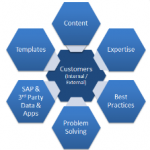 Consideration #1 – Getting Started!
Consideration #1 – Getting Started!
- Understanding the business requirements
- Enabling overall usability
- Translating the business process to SAP Jam
- Ensuring relevance by way of content / communications
- Utilizing dynamic widgets vs. static text and images
- Assessing Change Management
- Ensuring participation
Consideration #2 – ROI & Value
Pinpoint the SAP Jam Return On Investment (ROI) and business drivers important to your organization centered around “Time” “Money” and “People” scalability to ensure measurable (“quantifiable” and “qualifiable”) gains.
Consideration #3 – Differentiators
SAP Jam is a unique market leading solution. It seamlessly integrates social business capabilities into existing (& planned) business process whereas as other 3rd party platforms are focused on the tools. SAP has made SAP Jam an integral part of all SAP solutions addressing:
- All lines of business centric vs. CRM as the primary
- One SAP Jam vision vs. multiple roadmaps which have overlaps
- SAP’s proven 40-year history of business software, processes, and market leadership
- Collaborative ecosystem (Out of the Box – i.e. OpenText, Box, SharePoint, etc.)
- Application integration (i.e. OData, REST APIs) by utilizing the SAP Jam Developer Center
- Integrated platform as a foundational principal vs. a standalone which increases costs
- Internal & external SAP Jam group capabilities which easily set-up
- Structured collaboration to support problem solving, issue resolution, and decision making
- Screen and video capture
- Mobile App alignment with SAP Jam Page Designer provides out of the box mobile capabilities
Consideration #4 – Roles & Responsibilities
When addressing an SAP Jam initiative the executive sponsor, business owner(s), and project leader must consider 3 key roles including:
- Administrator(s) (or Power Users)
- Content Manager(s) (& Contributors)
- End Users
While one SAP Jam tactical action can be straight forward. Each action has a consequence on another aspect of the project or initiative.
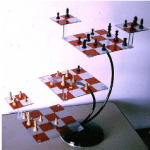 For those of us who watch (or remember) Star Trek and Spok’s 3D chess game, each move has an impact to another chess piece which may be on the board you are working on or another. It takes a lot of SAP Jam experience to address these moves which have important relationships to other business processes.
For those of us who watch (or remember) Star Trek and Spok’s 3D chess game, each move has an impact to another chess piece which may be on the board you are working on or another. It takes a lot of SAP Jam experience to address these moves which have important relationships to other business processes.
A successful SAP Jam implementation addresses 5 phases:
- Preparation
- Realization
- Verification
- Launch
- Post Go-Live
 It takes vision, leadership, teamwork, compelling business outcomes, and passion to build any successful community which meets either face-to-face or virtually. SAP Jam requires the same consideration to achieve successful implementations and adoption.
It takes vision, leadership, teamwork, compelling business outcomes, and passion to build any successful community which meets either face-to-face or virtually. SAP Jam requires the same consideration to achieve successful implementations and adoption.
Whether its learning how to play the piano or SAP Jam, it takes multi-dimensional expertise to ensure that all the “keys and pedals” are optimized.
SAP Jam has many self-evident, out of the box templates and capabilities that are excellent, but to gain the full advantage it takes the right skills, work experiences, and expertise to achieve the highest level of success.
— About the Author
 Richard D. Blumberg, President, World Sales Solutions, LLC (WSS) (www.WorldSalesSolutions.com) provides 25+ years of thought leadership on a variety of “View from the Top” strategies including: Enterprise Social Business, Go-to-Market Strategies, Business Development, Talent Development, and Community Building. He and his team are recognized SAP Jam global experts for implementations and adoption.
Richard D. Blumberg, President, World Sales Solutions, LLC (WSS) (www.WorldSalesSolutions.com) provides 25+ years of thought leadership on a variety of “View from the Top” strategies including: Enterprise Social Business, Go-to-Market Strategies, Business Development, Talent Development, and Community Building. He and his team are recognized SAP Jam global experts for implementations and adoption.
WSS is a SAP Service Partner for SAP Jam and long-time supporter of the SAP Community Network and the SAP Ecosystem.
Prior Blogs:
– View from the Top: Bill McDermott shares his success secrets at a #fireside chat!
– The Path to SAP Jam ROI Success
– SAP Jam Work Patterns: The Big $ or € &/or ¥ Game Changer for a New Product Launch!
– SAP Jam: The ROI Impacting Sales Productivity
– Split Second Selling with SAP Jam – 7 Use Cases!
– The Customer Go-to-Market Imperative – Transforming Silos to Social Business and Community Building
Originally posted on the SAP Community Network – full blog >>
The Path to SAP Jam ROI Success
Understanding the Financial Value
Introducing the WSS ROI Calculator for SAP Jam
.
Many SAP Jam initiatives require a solid business justification before senior management will commit time, money, and resources. The business case can address one or more of the following:
- Revenues – Aligning strategic and tactical sales, profits, and margins with account plans
- Customers – Engaging customers to provide value-add, collaboration, and communications
- Employees – Providing an environment to maximize productivity, performance, learning, onboarding, and cross-team collaboration
- Partners – Leveraging the channel to extend revenues, delivery, learning, and customer reach
- Operations – Identifying and quantifying process improvements and simplification
- Financial – Reducing costs and/or showing a realistic Return on Investment (ROI)
.
The assessment of SAP Jam begins with the value and importance of SAP and SuccessFactors. SAP is the market leader for business software with over 253,000 customers. SAP Jam has over 15 million subscribers. One only needs to look at the SAP Solution Explorer value maps, with a breadth of products and solutions, to realize that the current and upcoming investments (& alignment) with SAP Jam are part of the overall strategy to fuel organizational simplification, cloud and “digital transformation.”
- Quantify – Understanding a project’s economic impact and business drivers can turn uncertain support into an endorsement to move forward.
- Stakeholders – Connecting ROI to a project can build confidence amongst key colleagues, cross-team members and influencers that a project is worthwhile.
- Benefits – Socializing a SAP Jam project can lead to finding additional benefits that were initially not recognized.
- Prioritization – Ensuring accountability. Once the decision is made to invest in a SAP Jam project the ROI can help management and stakeholders prioritize their time as participants.
- Change – Recognizing that an important business initiative needs help (i.e. by way of change management) and that SAP Jam can enable important outcomes.
Understanding the Financial Value
Measuring financial value can be complex. Breaking it down into known components helps simplify:
- Time – Accelerating productivity and reducing wasted time
- Money – Aligning value around salaries (and cost savings) as well as supporting revenue initiatives
- Volume – The quantity of people including employees, customers, partners, and other stakeholders
Providing a base level framework around these values provides a business model and perspective.
How do we know it works?
In addition to World Sales Solutions (WSS) best practices and hundreds of SAP Jam and related community work experiences, consider an industry analyst’s perspective:
.
“According to an IDC White Paper sponsored by Adobe, “Bridging the Information Worker Productivity Gap: New Challenges and Opportunities for IT,” September 2012, reporting on a global survey of information workers and IT professionals, information workers waste a significant amount of time each week dealing with a variety of challenges related to working with documents. This wasted time costs the average organization $19,732 per information worker per year, amounting to a loss of 21.3% in the organization’s total productivity.”

Now assess the impact to your organization!
Based on a breath of data points, customer feedback, and findings, World Sales Solutions has built the first WSS ROI Calculator for SAP Jam(www.wssroi.com). This tool provides an internal/external “customer-centric” framework (see diagram on right) for measuring the economic impact of Time, Money, and Volume when addressing:
- Finding the right information
- Searching for but not finding information
- Realizing information is in disparate locations vs. a central hub
- Receiving unfiltered information (including spam)
- Finding the wrong information
- Reworking unfound or wrong information
- And many other “Business Driver” considerations
How do these examples affect your business goals & objectives? Consider the impact of each!
In summary, there are many paths to realizing value from SAP Jam projects and initiatives. Using a combination of “ROI” and identifying “business drivers” (see WSS ROI Calculator for examples) these strategies and tactics can be centralized and guided by executive sponsors, business owners, and content (or community) managers along with end user contributions and collaboration.
.
Organizations that implement and adopt SAP Jam can gain higher productivity, performance, and a competitive advantage.
.
The use of SAP Jam allows organizations to invest in core competencies, achieve a solid ROI, and addresses important business drivers which form the foundation for success.
—
 About the Author
About the Author
Richard D. Blumberg, President, World Sales Solutions, LLC, (WSS) (www.WorldSalesSolutions.com) provides 25+ years of thought leadership on a variety of “View from the Top” strategies including: Enterprise Social Business, Go-to-Market Strategies, Business Development, Talent Development, and Community Building.
.
WSS is a SAP Service Partner for SAP Jam and long-time supporter of the SAP Community Network and the SAP Ecosystem.
.
Featured SAP Community Network Blog: The Path to SAP Jam ROI Success
..
Prior Blogs:
– View from the Top: Bill McDermott shares his success secrets at a #fireside chat!
– SAP Jam Work Patterns: The Big $ or € &/or ¥ Game Changer for a New Product Launch!
– SAP Jam: The ROI Impacting Sales Productivity
– Split Second Selling with SAP Jam – 7 Use Cases!
– The Customer Go-to-Market Imperative – Transforming Silos to Social Business and Community Building
SAP “Autism @ Work” | A 220 Year Old Cultural Center | 9 Tons of Food…
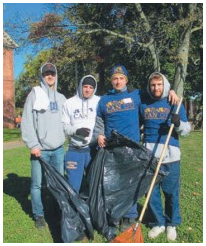 3 articles that highlight WSS civic engagement and the importance of community service:
3 articles that highlight WSS civic engagement and the importance of community service:
- How LeBow Students Helped SAP Hire Employees on the Autism Spectrum
- Alumni Volunteers Show Some Love for 220 Year Old Cultural Center
- Wegmans Donates 9 Tons of Food to Manna On Main Street
A few quotes on Community Service…
“We make a living by what we get, but we make a life by what we give.”
– Winston Churchill
“If you knew what I know about the power of giving, you would not let a single meal pass without sharing it in some way.” – Buddha
“You must be the change you wish to see in the world.”
– Mahatma Ghandi
“Never doubt that a small group of thoughtful, committed citizens can change the world; indeed, it’s the only thing that ever has.” – Margaret Mead
“Love cannot remain by itself — it has no meaning. Love has to be put into action and that action is service.”
– Mother Teresa
“I have found that among its other benefits, giving liberates the soul of the giver.”
– Maya Angelou
Networking: How and Why Leaders Spread the Word!
 Most network groups, associations, and clubs have initiatives which may take the form of an event, conference, fund raiser, resource development, webinar or meeting.
Most network groups, associations, and clubs have initiatives which may take the form of an event, conference, fund raiser, resource development, webinar or meeting.
The difference between the “participants” and “leaders” is often a fine line of getting involved and helping “spreading the word” about the upcoming program or activity. Kinetic vs. passive energy goes a long way!
A few tips to consider when bringing together a group:
- Identify a central theme that draws people in
- Form a core team
- Provide opportunities to network
- Welcome current and new members
- Build awareness of existing benefits and value-adds
- Create a memorable experience for everyone to enjoy
- Focus on what’s attainable vs. spreading too thin
- Set quantifiable goals and measure success
Leaders (or those who are “connectors”) readily take the extra steps to encourage:
- Participation – Early commitments to attend, register or reply to the RSVP
- Recruitment – Set goals to get others involved (i.e. connect to 5+ or more friends or colleagues to participate)
- Socialize – Leverage social tools to spread the word such as Blogs, Facebook, LinkedIn, YouTube, and Twitter
- Personalize – Make personal connections by phone, e-mail and/or face-to-face
When joining forces with a group if each member does a small part then the sum of the parts will be greater then what one participant can deliver by themselves.
 Consider this analogy: “From a small snow ball a big snow ball can be created; it just needs to be rolled over enough snow!:-)” Success is about building momentum around small steps, broken into small parts to ultimately make a big difference.
Consider this analogy: “From a small snow ball a big snow ball can be created; it just needs to be rolled over enough snow!:-)” Success is about building momentum around small steps, broken into small parts to ultimately make a big difference.
Growing a group. Increasing involvement. Having fun. The key is to create meaningful connections which ultimately benefits a person or group on a social and/or professional level.
When momentum is built. When teams help spread the word… Then groups, associations, or clubs have a better opportunity to reach short and longer-term goals.
As a result many win-wins take place on many levels!
View from the Top: Leadership Secrets
The blog below and video was originally posted on the SAP Community Network after a November 2012 Fireside Chat with Bill McDermott, co-CEO of SAP and President John Fry at Drexel.
—
View from the Top: Bill McDermott shares his success secrets at a #fireside chat!
“In the end, it’s the customer and the customer alone that determines if we have a job
“You need to constantly be innovating for the future, while you’re executing for the present
…the best leaders understand that!”
“You all can make a difference, the young generation coming out of the universities and coming into the workforce. You see things we don’t see, your ideas are unique, you understand where the world is going, you understand social. You get all that, and I think that’s such an unbelievable opportunity to help the economy, create innovation, create jobs, and push things forward.”
—Quotes from Bill McDermott, co-CEO of SAP AG
~~~~~~~~~~~~~~~~~~~~~~~
Learning from Top Leaders
~~~~~~~~~~~~~~~~~~~~~~~
The “View from the Top” Fireside Chat with Bill McDermott, co-CEO of SAP and Drexel University’s President John Fry on November 1 was an amazing opportunity to learn from two top leaders who have a lot in common with each other. Both are visionaries who provide transformational leadership to large organizations and most importantly they both value helping the community.
The topics included themes such as jobs, trends, and leadership which are of interest to students, alumni, professors, and professionals both in the audience and around the globe far beyond the “375” who attended in Philadelphia, Pennsylvania and Sacramento, California (USA) (via a live video feed) along with 30-40 who were turned away due to the auditorium’s capacity!
~~~~~~~~~~~~~~~~~~~~~~~~~~~~~~~~~~~~~
A Students Reflection – Now and Years Later
~~~~~~~~~~~~~~~~~~~~~~~~~~~~~~~~~~~~~
Everyone who attended benefited including:
- Students who are looking for their job upon graduation
- Alumni who are successful and want to take their career to the next level
- Professors and lecturers who teach SAP-related courses and/or want to position their students for a competitive marketplace
- Recent graduates who have their first job and want to navigate to achieve success within their organization and with customers
- Employees and professionals who want to learn about the recipes for success!
The bottom-line is that in my case, I can remember… a time when I was a student (back in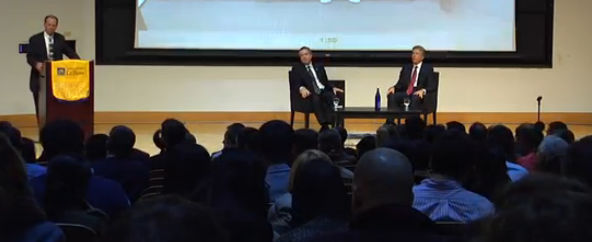 the day!)… when I was (& still am) hungry to receive wisdom, knowledge and lessons learned from top executives, leaders, and experts. Often it can be hard to come by. The opportunity to learn from these leaders was an amazing opportunity!
the day!)… when I was (& still am) hungry to receive wisdom, knowledge and lessons learned from top executives, leaders, and experts. Often it can be hard to come by. The opportunity to learn from these leaders was an amazing opportunity!
~~~~~~~~~~~~~~~~~~~~~~~~
So What are the Takeaways?
~~~~~~~~~~~~~~~~~~~~~~~~
All of us are on a journey! From our early school days to now we are all the product of our decisions. Learning from top leaders can provide us insights on how to be successful. We can learn… What worked for them? How can we apply it to our own situations? What big or small idea can help us to save time and accelerate our careers and ultimately win!?
The topics shared included:
- Jobs – Competing to jumpstart your career
- Trends – Identifying global opportunities in the marketplace including China and beyond
- Leadership – Sharing lessons learned and best practices
But there’s an even a greater reason why this event was memorable and worth watching on the video… and that’s the stories…
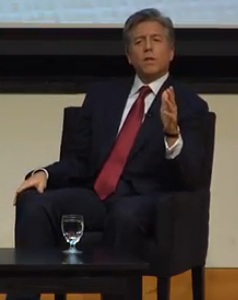 Bill McDermott provided masterful insights by telling us everyday stories that he experienced from his first business owning a deli (and a few video games!) at age 17 to his first job upon graduation at Xerox and how he conducted his business as a Xerox “Marketing Representative” on the streets of New York City selling door-to-door. While he did share insights on SAP including the value of the SAP University Alliances Program which were phenominal, a lot of his discussion was down-to-earth vignettes which we can all relate to in our everyday work, lives, and plans for the future.
Bill McDermott provided masterful insights by telling us everyday stories that he experienced from his first business owning a deli (and a few video games!) at age 17 to his first job upon graduation at Xerox and how he conducted his business as a Xerox “Marketing Representative” on the streets of New York City selling door-to-door. While he did share insights on SAP including the value of the SAP University Alliances Program which were phenominal, a lot of his discussion was down-to-earth vignettes which we can all relate to in our everyday work, lives, and plans for the future.
 President John Fry did a wonderful job of providing his insights including a very strategic Innovation Neighborhood planned as the gateway from 30th Street (a top East Coast transportation hub in the United States) to Drexel’s campus in West Philadelphia (& University City).
President John Fry did a wonderful job of providing his insights including a very strategic Innovation Neighborhood planned as the gateway from 30th Street (a top East Coast transportation hub in the United States) to Drexel’s campus in West Philadelphia (& University City).
In addition, he ensured that the flow of the Fireside Chat provided the maximum value for the audience..
.
~~~~~~~~
Summary
~~~~~~~~
The knowledge shared will help and inspire students, alumni, professors/lecturers, and professionals from around the globe who are the “current” and “future” business and IT leaders!
The opportunity to have a front row seat, to hear the video, and review the recap on the Business Innovation site will provide inspiration to all who take the time to learn more!
In my case, having watched this event live from the front row; I can truly say that listening to the video the second time around is even more inspirational: I’m looking forward to sharing it with my team as well as hearing it a few more times!
.
Community Service: Providing Business Leadership in One Hour
The blog below is inspired by a recent “Business Community Leadership Forum “How to make a difference in one hour or less!” with Manna on Main Street, a food pantry, soup kitchen, and emergency financial aid provider, which took place on Tuesday, June 19th, 2012 in Lansdale, PA as well as many years of working with inspired community leaders and volunteers.
– – –
Leadership Role Models
Entertainment, celebrity and business stars like Bono, Oprah, Jon Bon Jovi, Nelson Mandela, Bill & Melinda Gates, and Lady Gaga give generously to important causes. Each of them inspire change by empowering individuals and communities to help others and give back.
 When you assess each of their attributes as well as the characteristics of other business and community leaders one core tenant that often stands out is that they associate themselves with non-profit organizations, charities (including their own foundations), and social issues by contributing their time, money, resources, and energy to help make a difference.
When you assess each of their attributes as well as the characteristics of other business and community leaders one core tenant that often stands out is that they associate themselves with non-profit organizations, charities (including their own foundations), and social issues by contributing their time, money, resources, and energy to help make a difference.
At a recent Global Youth Leadership Summit, Tony Robbins, entrepreneur, author and peak performance strategist, shared the following wisdom,
“Leaders inspire themselves and others to do, be, give, and become more than they ever thought possible, thereby creating more leaders in the process. When faced with challenges, leaders defy the odds, set a new standard, and step up and create the future as they see it.”
While there are many individuals in our communities who give generously there are many who, rightfully so, express that they are “too busy” with work, families, and existing obligations to support that one extra cause.
How can being too busy obscure change around social issues? What happens if those who are capable, interested, and talented are too busy to help worthy causes?
 As business leaders we are familiar with the Pareto Principle (also known as the 80–20 rule, the law of the vital few) named after the economist Vilfredo Pareto which states that, for many activities, roughly 80% of the effects come from 20% of the causes.
As business leaders we are familiar with the Pareto Principle (also known as the 80–20 rule, the law of the vital few) named after the economist Vilfredo Pareto which states that, for many activities, roughly 80% of the effects come from 20% of the causes.
So it’s true, we need to encourage the 20% who can contribute in order to effect the 80% of change we would like to see happen.
When business leaders, volunteers, and community members, who represent a vital part of the 20%, are too busy then the changes we seek will slow down or not happen at all. As a result, we want to support enough individuals and organizations to contribute to the change so that worthwhile causes will take place — and those who need help will get more of it.
Perhaps we should accept the status quo? Or perhaps there’s a way to enable small amounts of time so that more colleagues can extend themselves just a little bit more and feel good about it.
The One Hour Difference
 For those of us looking for a solution of creating change let us suggest the “one hour” principal which states that if you can find a way to give just one hour in a week or month of your time that good things will come of it.
For those of us looking for a solution of creating change let us suggest the “one hour” principal which states that if you can find a way to give just one hour in a week or month of your time that good things will come of it.
Or in others words, as Mahatma Gandhi said, “We must be the change we want to see in the world.” And for that to happen we must find the time to do it.
So whether you are a current or emerging business leader or an every day worker or community member what is the benefit of giving an extra hour or your time? A few considerations include:
- Building your network
- Cultivating skills and empowerment beyond one’s current job or role
- Increasing visibility and influence in society as an individual and as part of an organization
- Helping to support a community cause one small step at a time
- Passing a small amount of your time forward without asking for anything in return
Now keep in mind, there’s more to this principal then one hour. If you attend a meeting, event, or activity it will likely take more then one hour but the idea is as follows: what can you do in “one hour” to effect change and contribute?
Somehow we want to go beyond “zero time” to “one hour” and then we can build upon it as it makes sense. We can also combine one hour contributions and realize that the sum is greater then the parts!
So what are the next steps in supporting an important non-profit, charity, or social cause? A few ideas include:
- Contact an organization and take an onsite tour, arrange a brief call, and/or research it on the internet. Find out more!
- Connect with the executive director, business development, volunteer manager, and/or staff and ask what type of help they need based on your skills and interests
- Organize participation at a fund raiser that is already set-up (i.e., golf outings, 5Ks / walks, bike rides, sponsorship, car donations, annual dinners, matching funds, and other creative ideas!)
- Suggest that proceeds from a company meeting or annual event go in part to a worthy non-profit, charity or social cause
- Assess what you can do in your off hours by way of e-mails, social media, and commutes to and from the office (using a hands free cell phone!) to make directed calls to connect with other volunteers, donors, or contributors
- Extend communications by offering to pass on news or announcements to your organization and co-workers from an organization who’s social cause you support
- Identify a busy non-profit or charity leader or chair of a group (or committee) and ask them what you can do to help with “one hour” a week or month of your time
Business leaders and community volunteers must be willing to set priorities and make small sacrifices. Great leaders serve first and act to help others which is positive for themselves and the organizations they represent.
If we give “one hour” we can extend ourselves and help build tangible value and results for those who need it.
And who knows, one hour can lead to “two” and pretty soon you may find you have more time then expected and the social issue that you support will benefit in both big and small ways!
—
 Richard D. Blumberg, President, World Sales Solutions, writes this series of blogs to help senior executives and their teams, leaders, influencers, educators, and students develop effective strategies and tactical execution which results in more revenues, profits, growth, jobs, and value. More >>
Richard D. Blumberg, President, World Sales Solutions, writes this series of blogs to help senior executives and their teams, leaders, influencers, educators, and students develop effective strategies and tactical execution which results in more revenues, profits, growth, jobs, and value. More >>
